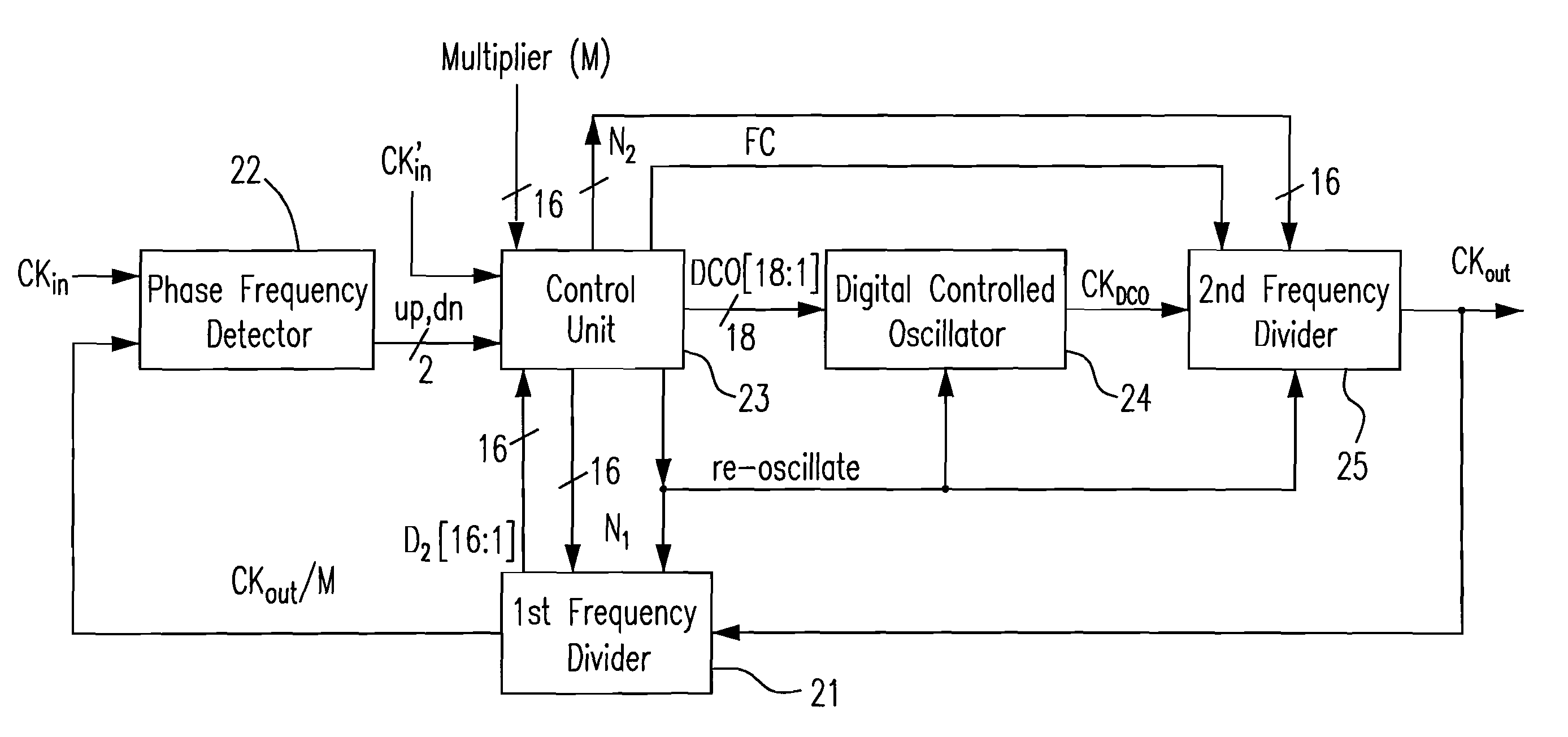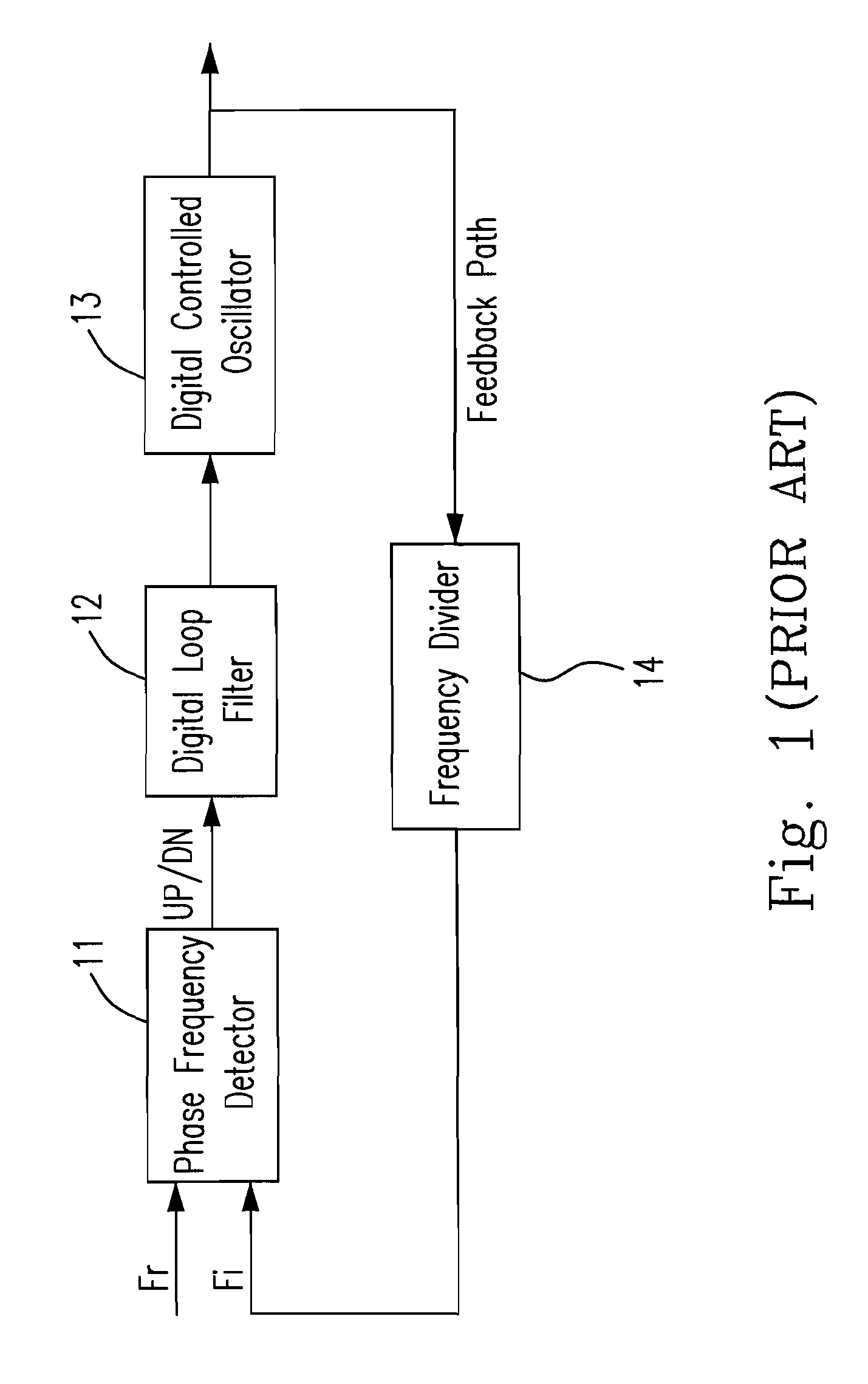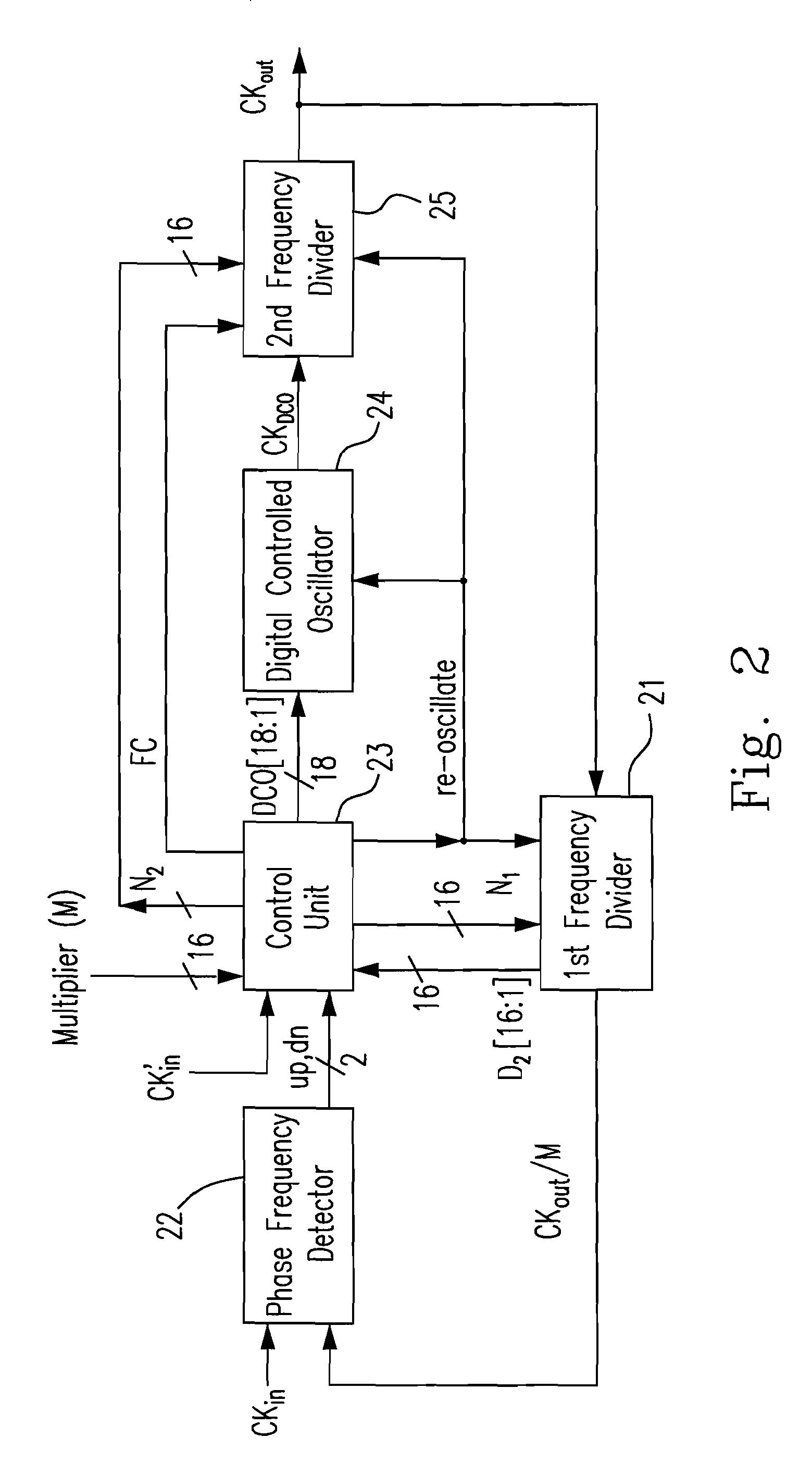All digital phase-locked loop with widely locked frequency
a phase-locked loop, all digital technology, applied in the field of phase-locked loops, can solve the problems of finite frequency resolution and quantization noise, digital and analog circuit integration, signal disturbing to the analog circuit will surely be encountered, etc., to achieve efficient transfer, shorten the locking time, and reduce the effect of process dependency
- Summary
- Abstract
- Description
- Claims
- Application Information
AI Technical Summary
Benefits of technology
Problems solved by technology
Method used
Image
Examples
first embodiment
[0026]A first embodiment of the present invention is described in FIG. 2. FIG. 2 shows a circuit layout of an all-digital phase-locked loop (ADPLL) 2, wherein the ADPLL 2 is integrated into a local oscillator of an FM broadcast receiver.
[0027]According to FIG. 2, the ADPLL 2 comprises a first frequency divider 21, a phase frequency detector (PFD) 22, a control unit 23, a digital-controlled oscillator (DCO) 24, and a second frequency divider 25. The first frequency divider divides a frequency of a feedback signal CKOUT by a natural number M to reduce the frequency by M times, so as to generate a first output signal CKOUT / M. The PFD 22 generates a decrement signal dn and an increment signal up, based on a phase difference and a frequency difference between a first reference clock signal CKIN and the first output signal CKOUT / M. The control unit 23, coupled to the PFD 22, respectively receives the dn, the up, the M, and a second reference clock signal CK′IN to generate a plurality of d...
second embodiment
[0030]An advantageous embodiment for the present invention is described in FIG. 3. Based upon the first embodiment, one additional frequency divider is provided at the input terminal of the ADPLL to result in an input versus output frequency ratio of M / N where M and N are natural numbers. Please see the descriptions below.
[0031]FIG. 3 shows a circuit of the second embodiment of the present design for an ADPLL 3. In addition to a first frequency divider 31, a PFD 32, a control unit 33, a DCO 34, and a second frequency divider 35, the ADPLL 3 further comprises a third frequency divider 36 and a delay unit 37. The third frequency divider 36 is designed for producing a second output signal CKIN / N by dividing an input clock signal CKIN by a natural number N. The delay unit 37, coupled to the third frequency divider 36, delays the second output signal CKIN / N for a period of time based upon a timing difference of a level change of the second control signal re-oscillate. The delayed second ...
PUM
 Login to View More
Login to View More Abstract
Description
Claims
Application Information
 Login to View More
Login to View More - R&D
- Intellectual Property
- Life Sciences
- Materials
- Tech Scout
- Unparalleled Data Quality
- Higher Quality Content
- 60% Fewer Hallucinations
Browse by: Latest US Patents, China's latest patents, Technical Efficacy Thesaurus, Application Domain, Technology Topic, Popular Technical Reports.
© 2025 PatSnap. All rights reserved.Legal|Privacy policy|Modern Slavery Act Transparency Statement|Sitemap|About US| Contact US: help@patsnap.com



